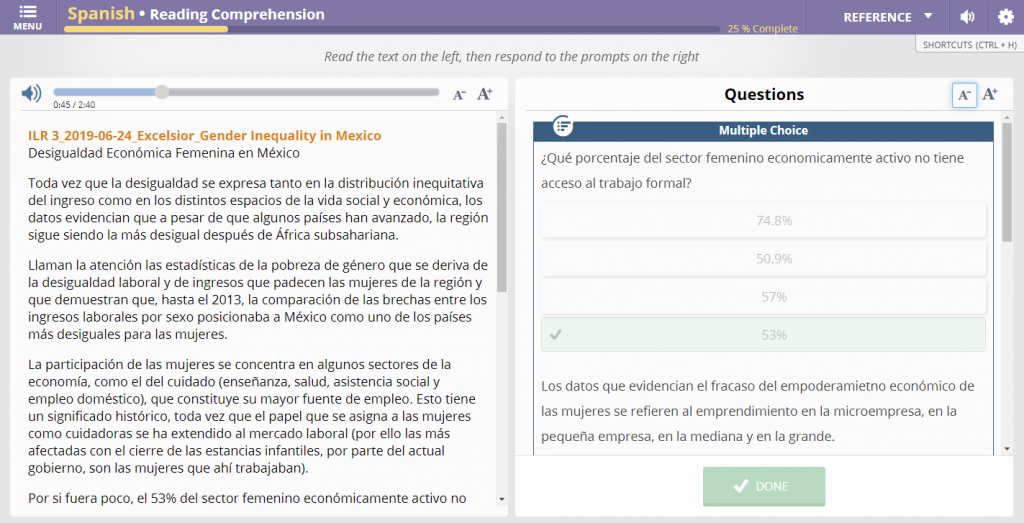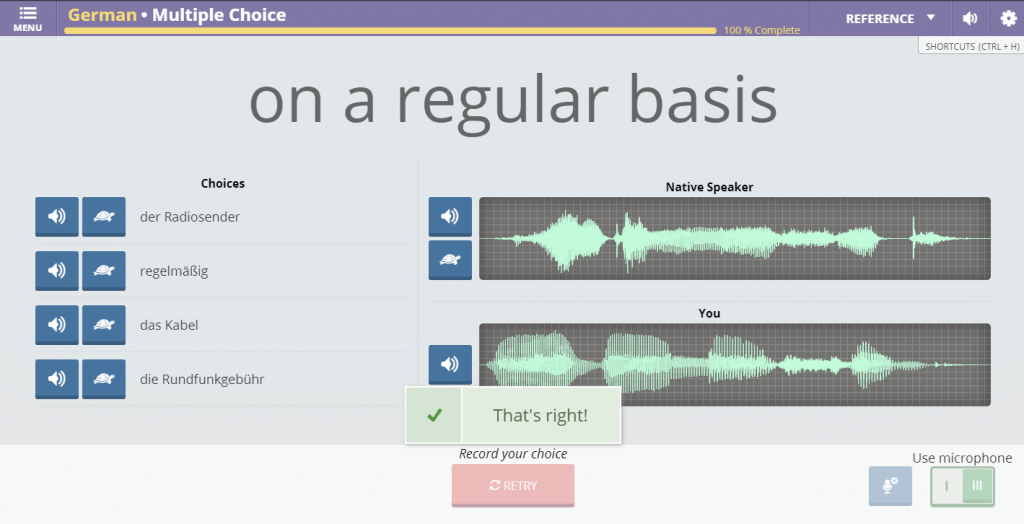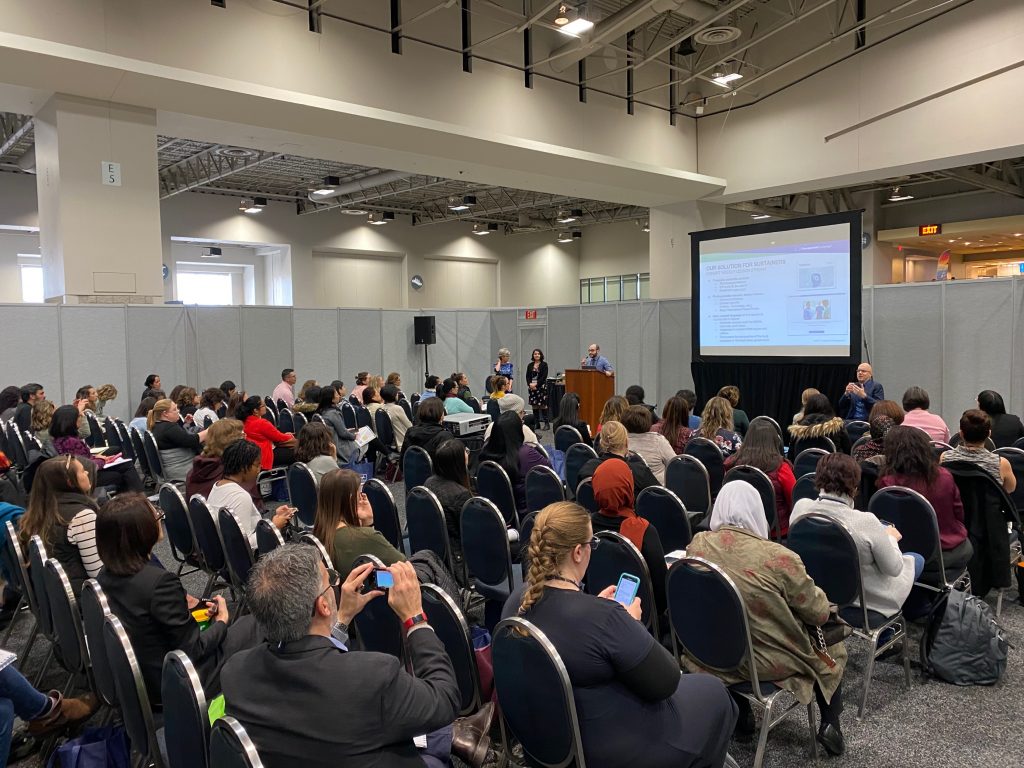Transparent Language 2019 Year in Review Posted by Transparent Language on Dec 23, 2019 in Company News, For Educators, For Learners, For Libraries
Any serious language learner will know the importance of reviewing what you’ve learned. So, it’s only logical that we apply that practice ourselves and look back on what we’ve learned and accomplished in 2019.
What have we been working on?
The Transparent Language team spent a good chunk of 2019 improving and expanding our language platforms: the CL-150 Platform (used by US Government language professionals) and Transparent Language Online (used by individuals, libraries, companies, and schools around the world).
CL-150 Updates
It’s been a big year for the CL-150 Platform. You can read the full CL-150 Year in Review for more details, but here’s a few of the highlights from 2019:
- CL-150 Cohorts: In 2019, the Cohort Team published more than 1,700 new Cohort lessons in 36 language and level pairs on the CL-150 Platform! These weekly lessons are designed specifically for language professionals maintaining proficiency while working full-time, providing a level-appropriate lesson on an engaging topic from the past few weeks. Recent lessons have covered everything from gender inequality in Mexico to the Arab Artificial Intelligence Summit in Jordan to the impact of online gaming addiction in China.

- Recurring Reports: We know that reliable tracking and reporting is critical for language programs to ensure students are completing assignments and sustainers are meeting policy requirements. Program managers and instructors can now schedule and receive recurring reports to check in with learners right from their inbox!
- Lesson Authoring Updates: The Lesson Authoring tool received several highly requested authoring updates in 2019, including the ability to preview lessons before publishing, so instructors can see the lessons as students will see them. Lesson authors can also edit the lesson text at any point in the authoring process—no more having to “unlock” and lose progress.
Transparent Language Online Updates
- New English learning materials: Our most requested language in Transparent Language Online is still English, so we’re continuing to expand our collection! To better support schools and libraries who serve diverse ELL populations, our Content team published four new “Beginner English” courses for native speakers of Tamil and Hebrew.
- Professional-level courses: Our newest course is also one of our longest and most advanced. The “General Language for Professionals” course (currently available in German and Indonesian, with more languages to come in 2020) has three levels: beginner, intermediate, and advanced. Each level is designed to help learners use the language effectively and appropriately in real-life situations and focuses mainly on speaking and listening skills.

- New languages from the 7000 Languages partnership: We continue to donate our technology to 7000 Languages, a non-profit that partners with language advocates to create online courses for endangered and indigenous languages. As part of the partnership, those courses become available in Transparent Language Online so anyone interested in learning can have access. This year, we added courses in four new languages: Holikachuk, Gwich’in, Denaakk’e (Koyukon), and Benhti Kenaga’ (Lower Tanana).
- Recurring Reports: Educators and librarians providing Transparent Language Online to their students and community can now schedule recurring reports to monitor usage on a daily, weekly, bi-weekly, or monthly basis. Best of all, the report can be sent right to your email!
- Daily Refresher Push Notifications: Learners with cluttered inboxes can now choose to receive the Daily Refresher as a push notification from the Transparent Language Online web app instead of by email.
Where have we been working?
The Transparent Language team has been crossing the country since January to meet the educators, librarians, and government agencies who use our platforms to run their language programs.
In 2019, the team traveled to 12 states and 3 countries to present demos at conferences and provide hands-on training for our customers. For US Government customers, that included: 29 orientations for program managers using the CL-150 Platform to track, report, and enforce sustainment policies; 118 orientations for individual learners sustaining in the platform; and 7 trainings for instructors using the platform to author lessons and manage their classes online.

Other travel highlights include receiving our fourth consecutive Platinum Award at the American Library Association Midwinter Conference, presenting at ACTFL 2019, a demo for librarians at Tennessee Datafest to support local Tennessee libraries (all of which now offer Transparent Language Online thanks to a statewide partnership with TEL!)
We’ll be back on the road again in just a few weeks, attending the 2020 ALA Midwinter Conference in Philadelphia (stop by booth 1832 if you’ll be there)!
What’s been on our minds?
The importance of vocabulary for building and maintaining proficiency
We get asked a lot about why the activities and lessons in our language platforms focus so much on vocabulary. While we could point out how our lessons also drive grammar, culture, and the four main language skills (listening, speaking, reading, and writing), we’ll admit we do focus on vocabulary—for good reason.
Did you know proficiency levels have consistently been shown to increase in tandem with vocabulary size, or that multiple studies have indicated that of all factors contributing to language proficiency, vocabulary size is by far the most significant contributor? Not to mention how a larger functional vocabulary supports grammar learning (including providing a stronger foundation on which grammar rules can be applied in new ways), and that vocabulary supports contextual understanding, which improves both reading and listening comprehension.
That’s a whole lot of value from learning words and phrases, right? But we’ve also been focusing on what kind of vocabulary is most valuable at different proficiency levels. At lower levels, the most useful vocabulary is high-frequency words (words you’re most likely to encounter or use) while at higher levels the most useful vocabulary might be domain-specific terms or simply more vocab depth (collocations, idioms, etc.)
If you’re curious about the level of care we put in to selecting vocabulary (or to see the sources for all the studies we mentioned above), you can read more here.
Preventing proficiency loss
All this talk about building proficiency lends itself to another important question that’s been on our minds: how can learners prevent proficiency loss?
Proficiency loss is almost ubiquitous among language learners—it’s why most of us have forgotten all that Spanish we learned in high school years ago. But for many of our government customers, the stakes are higher: the cycle of proficiency loss and refresher training costs US Government language professionals time, money, and job effectiveness. What if language programs could prevent that costly cycle, providing adequate support for professionals to maintain and even enhance proficiency throughout their career?
That’s why we launched CL-150 Cohort lesson streams in 2014, to provide professionals with relevant, level-appropriate lessons every week based on current events that keep their language and cultural knowledge fresh. But in the years since, we’ve realized that learners need more structure, particularly in the form of formal requirements and accountability. That’s why we’ve invested more time into tracking and reporting capabilities—with a lot more to come in this area in 2020!
Ready to learn with us in 2020? Find out more about what we do at Transparent Language and how our online platforms can help you or your organization reach your language goals.

Build vocabulary, practice pronunciation, and more with Transparent Language Online. Available anytime, anywhere, on any device.




Leave a comment: